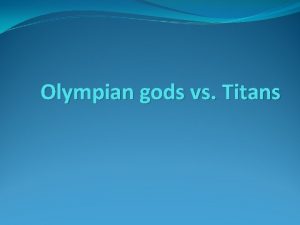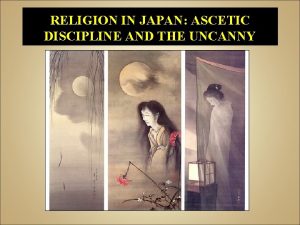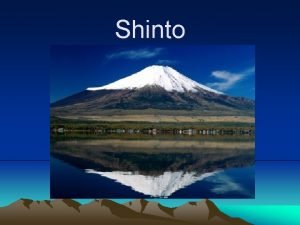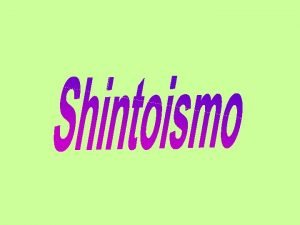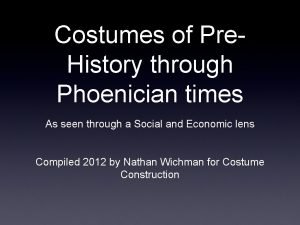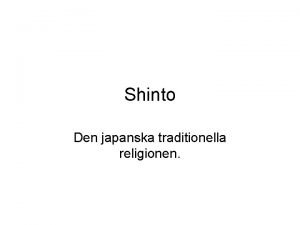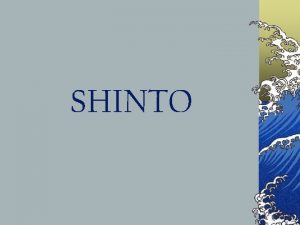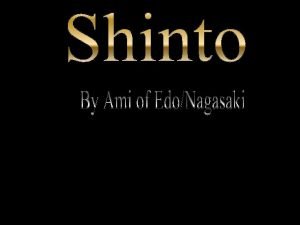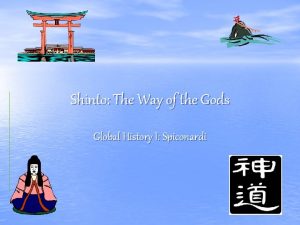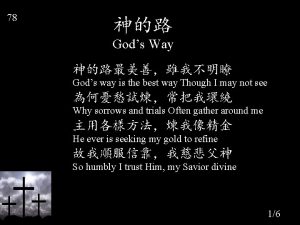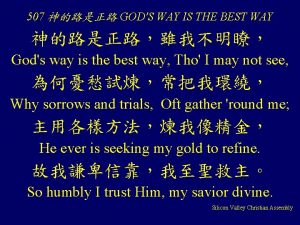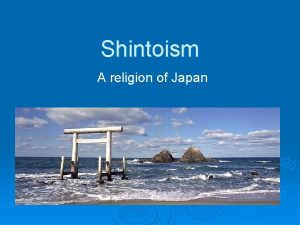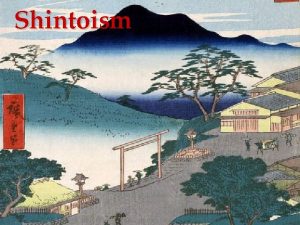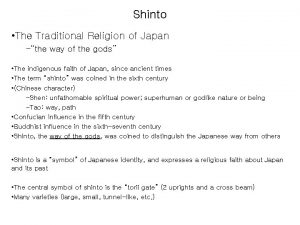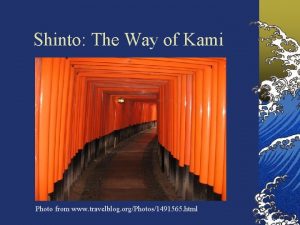Shinto The Way of the Gods Shinto in


















- Slides: 18

Shinto The Way of the Gods

Shinto in History FAncient Religion FResurged during 15 th century

Shen Do FShin = Unfathomable Spiritual Power FTo = tao = way FAlso: “Way of the Gods” FTerm coined in 8 th century to distinguish Shinto from Buddhism

Shinto FCurrently National Religion of Japan FHistorically, describes diverse religious practices

Tenets FFocus on adapting to life in this world. FFocus on harmonious living with the natural environment. F“The dead are not less real than the living. ” (p. 281)

Kami “That which is particularly wondrous, whether in nature or among people, they accepted as a superior object of worship, called kami. ” (Eastman, p. 260)

Kami includes: FDeities of earth and heaven FHuman beings, ghosts FBirds, beasts, trees, plants, seas, mountains, etc. FAnything awe-inspiring FGood AND Evil FAnything sacred or mysterious

Kami dragon Kami respond to human prayers and can influence the course of natural fources and human events.

Shinto deities Seated Kami, 12 th century The arrival of Buddhism in Japan ca. 9 th century introduced the concept of representational images. Often crafted to resemble male and female aristocrats.

Shinto lacks: FSupporting body of philosophical and moral literature.

Japanese Art FCharacterized by respect for nature. FCombination of grace, grandeur and reverence for subjects.

Winter Landscape By Sesshu Ca. 1470 s

Bust of a Beautiful Lady Dressed in a Kimono Utamaro Kitagawa 1794

The Great Wave off Kanagawa Hokusai Katsushika, ca. 1831

Noh Theatre FActors trained from childhood FStories from historical, literary sources (eg. Ca. 1000 C. E. ) FReveals some working out of passions felt by a character who often appears as a ghost FMain character usually masked FDance, pantomime, opera

Noh Theatre FTamura: Dance of the Ghost FNoh Theatre FHighly stylized movement FSlow, deliberate, gliding steps FLong entrance to stage from House Left indicates that it is a main hero or sidekick.

Traditional Noh Theater

Taiko in Noh FUsed ONLY in plays where the main character is a god, demon, or some other nonhuman being.
 Greek gods vs titans
Greek gods vs titans What cultural hearth was in the huang he river basin?
What cultural hearth was in the huang he river basin? Ascetic discipline
Ascetic discipline Glassdoor ruangguru
Glassdoor ruangguru The term shinto comes from two chinese words that mean
The term shinto comes from two chinese words that mean Taoism characteristics
Taoism characteristics Origini dello shintoismo
Origini dello shintoismo Shinto labs
Shinto labs Perbedaan one way dan two way anova
Perbedaan one way dan two way anova One way anova vs two way anova
One way anova vs two way anova Threaded binary tree definition
Threaded binary tree definition Conventional software
Conventional software Pengertian two way anova
Pengertian two way anova Perbedaan one way anova dan two way anova
Perbedaan one way anova dan two way anova This way that way forwards backwards over the irish sea
This way that way forwards backwards over the irish sea How to do a two way frequency table
How to do a two way frequency table One way two way anova
One way two way anova Talk this way
Talk this way Two gods
Two gods
